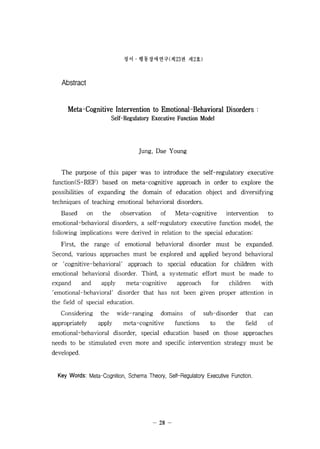???2007 ?????? ????? ?? ??????????
- 1. ??¡¤?????? Journal of Emotional & Behavioral Disorders 2007,Vol. 23, No. 2, pp. 1-28. ??????? ????? ?? : ???? ???? ??* ? ? ?** <? ?¡µ ? ??? ?????? ?? ???? ?????? ???? ????? ? ? ?? ??-????? ??? ?? ??? ?? ???£¬ ?? ?? ??? ?? ? ?? ?? ? ?? ??? ???? ????? ????? ??? ???? ???? ??? ????? ? ??? ??. ??? ??? ?? ????? ?? ??? ????£¬ ???? ???? ??£¬ ? ??? ??? ?? ?? ? ??? ?? ??£¬ ? ??? ????? ?? ?? ?? ????? ???. ??????? ????? ??? ???? ???? ??? ??? ??? ??? ? ??? ????? ?? ???? ??? ?? ?????. ??£¬ ?? ?? ?????? ??????? ??? ????? ??. ??£¬ ?????? ??? ????? ??? ????? ?? ? ??-??? ?? ???? ??? ??? ?? ??? ???? ????? ??. ??£¬ ?????? ??? ??? ? ?????? ??? ?? ????? ?? ??? ?? ??? ?? ???? ??? ????? ??. ?????? ???? ????? ??? ??? ??? ? ?? ???? ??? ?? ?? ??? ? ? ??? ?? ????? ?? ?????£¬ ???? ?? ??? ??? ??? ??. ?? ??: ??????£¬ ?|?? ??£¬ ????£¬ ???? ???? ??. * ? ??? 2006? ????? ???? ?? ?????. ** ????? ????? ??(E-mail; yeman@sarim.changwon.ac.kr ). Dept. of Special Education, Changwon National University.
- 2. ?? ¡¤ ??????(? 23 ? ? 2?) I . ? ? ??????? ?? ?? ? ??? ??? ??? ?? ??? ??£¬ ?? ? ??? ?? ???? ? ??? ??? ?????? ?? ????. ?£¬ ? ? ??? ???? ??? ?? ????£¬ ???? ?????£¬ ??? ? ? ?? ????? ?? ?? ?? ?? ???? ???? ??? ?? ??? ?£¬ ??? ????£¬ ???? ???? ????? ????? ?? ???? ??? ???? ??? ??? ???? ??. ???? ?????? ?? ? ??? ??? ?? ????? ?? ??? ???£¬ ????? ???£¬ ?? ???? ???£¬ ?????? ???£¬ ???? ???£¬ ????? ???£¬ ? ?? ???£¬ ??-??? ??? ?? ??. ??? ?? ?? ???? ?? ??? ?? ??£¬ ?? ?? ?? ??? ?? ?? ? ?? ???? ??? ? ??. ?? ??? ??? ???? ? ? ??? ??£¬ ?? ?? ???? ??? ?? ??? ??? ???? ?? (Remschmit & Quaschner, 2?)1; Konopasek & Forness, 2004). ?? , ?? ? ? ??? ??? ?? ??? ????£¬ ??? ??? ??? ??? ????? ??(Heward & Silvestri, 2004; Walker, Ramsey, & Gresham, 2004). ??£¬ ? ??? ??? ????? ???? ???? ?? ??? ??? ?? ??? ?????? ??? ????? ??(Bandura & Locke, 2003). ????????? IDEA2004??? ??????? ?? ??? ?? ?? ??£¬ ???? ??£¬ ???? ?? ? ??£¬ ???? ???£¬ ?? ? ??? ??? ?? ??? ?? ? ?? ??? ???? ??. ??? ?????? ? ????? ??? ?? ????? ?? ??? ???? ??. ????? ???? ?? CDSM - IV - TR)? ?? ??? ?? (Waldman & Li11enfield, 1995) ? ?? ???? ??. ??? ??? ??? ??? ???? ???£¬ ?? ? ? ??? ??? ?? ? ?? ?? ??? ?? ??? ???? ??? ?? ?£¬ ??? ???? ?? ???? ??? ??? ???? ?? ??? ?? ?. ??? ????? ???? ?????? ??? ??? ?? ??? ?? ? ? ?? ???? ???? ????? ??. ??? ??? ???? ?? ???? ??? ?? ????? ???? ???£¬ ?? ???? ????? ? ?? ???? ?? ???£¬ ???? ????? ????? ? ??-?? ¡®7
- 3. ??????? ????? ?? ???? ???? ?? ??? ??? ?? ??? ?? ???? ??? ????? ??? ? ??? ??? ?? ???? ?? ??? ??? ? ???£¬ ?? ?? ?? ??? ???? ? ??? ???? ??. ??? ??? ?? ??? ?? ??? ??? ??? ??? ? ?? ?? ? ????? ?????? ??? ?? ????? ??? (We]]s£¬ 2000). ??? ??? ???? ?? ?? ??? ?? ??? ???? ? ??? ? ??? ?? ??? ? ?????? ??? ?? ??? ????? ?? ?. ?£¬ ??? ??? ????? ???? ???? ????? ??? ??? ???? ??£¬ ???????? ??? ????? ??? ?????? ?? ? ??? ??. ??? ??? ??? ????? ???? ?????? ?? ???? ??? ??? ?? ??? ???? ????? ?? ?? ???? ??? ??? ??? ???? ??? ??. ??? ? ??? ???? ?? ? ????? ?? ??? ????? ???? ?? ??? ???? ?? (Wells, 2000). ? ??? ?????? ?? ???? ?????? ???? ????? ?? ?? ??-????? ??? ?? ??? ?? ???£¬ ?? ?? ??? ??£¬ ?? ?? ? ?? ??? ???? ????? ???? ????? ? ?? ???? ???? (self-regulatory excutive function: S-REF) ??? ?? ??? ? ??? ??. ??? ??? ?? ????? ????? ????£¬ ???? ???? ??£¬ ? ??? ??? ?? ?? ? ??? ?? ??£¬ ? ??? ????? ?? ?? ?? ????? ??. 11. ????? ????? ???? 1. ????? ???? 1) ???? ??? ??? ??? ??? 2???? ??? ??? ??? ??? ?? ? ?? ??? ?? ????? ??£¬ ??? ??? ?? ??? ?? ?? ??? ?? ??? ??? ??(??? ?£¬ 2004). ?????? ???? ??? ??? ?? ?? ??? ??? ??? ?? ? ¡¢)
- 4. ?? ¡¤ ??????(? 23 ? ? 2?) ? ????? ???? ??? ???? ??? ??? ???? ???? (Beck 1976) ??? ??? ??? ??? ??? ???? ??? ??? ?? ?? ?? ??. ??£¬ ??? ??? ??? ??? ???? ??? ?? (negative automatic thought) ? ?????? ??? ??? ???. ??? ? ?? ??? ??? ???? ?? ??? ??? ??? ????? ???? ??? ????. ??? ????? ??? ??? ??? ????? ??? ??£¬ ?? ? ?? ??? ???? ???. ?? ????? ??? ????? ????? <?? 2-1> ? ??. ? ?? ? ???£¬ ??????? ???? ??? ???? ???? ??. ??? ? ?? ???? ? ?? ??? ??? ???? ?? ??????£¬ ??? ? ??? ???? ???? ????? ???? ???? ???? ???? (???£¬ 1997). ??? ??? ???? ????(??)??(?; ?? ???? ??. ??? ??? ????) , ??? ??? ?? ??? ??????. ?? ? ?????£¬ ??(events) ? ???? ??? ??? ????. ? ¦Æ-? ? ? ??¡¸=:==¡µ | ?.71??* ?l? | ¦Æ¶þÒ»?F ?* ? ? ¦Ó> * ???.!- / ¦Å??? ?!?????? ?f?? ?! ::::>c1 ?? ?? ?? ?? 2-1. ????? ??? ???? ??????? ???? ???? ??? ???? ???? ???? ? ?£¬ ???? ???£¬ ???? ??? ????. ??? ??? ??? ??? ?? ??? ??? ????. ????? ??? ?? ??£¬ ?? ? ???? ?? ??? ???£¬ ????? ??? ?? ???(negative cognitive triad) ? ??? ??? ???£¬ ? ??? ???? ?? ??? ??£¬ ??£¬ ?? ?? ? ?? ??? ??? ??? ??? ???? (Wells £¬ 1979). ??? ??? ? ?? ??? ???? ??? ??? ??? ??? ? ????? ????(? -4-
- 5. ??????? ????? ?? : ???? ???? ?? ??£¬ 1997). ???? ??? ?? ????? ??? ??? ??? ???? ????. ??? ??? ??? ??? ??? ??? ??? ???? ???. ???? ? ????? ??? ?? ??? ?? ??? ???? ????. ????? ????? ??? ? ?? ???? ?????(Wells. 2000). ?? ??£¬ Teasdale? Bamard(993) ? ??? ??? ??? ????????? ??? ? ??£¬ ????? ??? ?? ???? ???? ??? ??? ????£¬ ??? ?? ???? ?????? ?? ????. ?? ???? ??? ? ??? ??? ? ?? ??? ??? ??? ??? ?? ?? (hot and cold belief) ??? ??? ??? ???? ???. Teasdale? B?nard? ???? ? ???? ???? ??? ?? ?? ???? ?? ???? ?????? ??(??? ????? ??????)? ???? ??. ????? ???? ??????? ??? ??? ??? ??? ??? ??£¬ ? ??? ??? ??? ???? ???? ¡°?? ????? ¡°?? ? ?? ? ????? ???? ??. S-REF ??? ?????? ??? ?? ? ? ??? ??? ???? ??? ??? ????? ??? ? ?? ?? ? ??? ??? ?? ?? ????? ?? ?? ? ??? ???? ??? ? ?? ? ? ? ? ?? ? ?? ? ???? (Wells £¬ 2000). ??? ??? ???????? ?? ??? ??£¬ ??£¬ ??£¬ ???? ? ??? ???? ? ?? ???? ?????? ??? ? ? ??? ??. ? ?? ??? ??? ??? ??? ??? ????? ????£¬ ???? ?? ?? ??? ??? ??? ? ??? ??? ?? ??? ????. Wells ? Matthews(994) ? ??? ?????? ??? ????? ??? ??? ?? ? ????? ??????? ??? ?? ?? ???. ??? ?? ???? ? ??? ??? ???? ????? ??? ??? ??£¬ ????? ??? ????? ??? ??? ?? ? ???. 2) ???? ????? ??? ??£¬ ?? ?? ??? ??? ?? ???? ??? ? ?£¬ ?? ?? ??? ?? ?? ??? ??? ????? ?????? ?? ? ??? ?? ??? ??? ????? ??? ?? ??? ???? ?(? ?? ?£¬ 2004) ?? ????. ????? ????? ?? ??? ??? ?? ?? ??? ???? ???? ??? ? ??£¬ ????? ?? ??? ?? -5-
- 6. ?? ¡¤ ??????(? 23 ? ? 2?) ??? ??? ??? ??? ?? ??? ???? ?? (Wells £¬ 2000; Nelson, Stuart, Howard, & Crawley, 1999). ????? ???? ????? ??(??)? ??? ??£¬ ??£¬ ???? ??? ???? ???? ??£¬ ???? ????? ??? ???? ??? ????. ??? ????? ??? ?? ?? ??? ?? ??? ??? ? ? ?? ??? ???? ????. ?? ??£¬ ??? ??? ??? ???? ??? ??? ¡°?? ??¡±? ???? ?? ??? ????? ??? ??? ??. ??? ??? ????? ??? ??? ????? ?? (tip-of-the-tongue effects) ? ??? ? ??. ??? ???? ??? ??? ??? ???? ??? ??? ??? ? ?? ?? ??? ??? ????. ? ?? ??? ????? ?? ??? ????? ??? ????? ??? ? ?? (Wells £¬ 2000). ????? ? ?? ??? ????? ??? ????? ????. ??? ?? ???? ??? ??? ?? ??? ??£¬ ???? ?? ??? ??? ?? ?? ??? ?? ??? ???. ????? ??? ????? ??£¬ ? ?£¬ ??£¬ ?? ? ???? ?? ?? ?? ?? ????? ??? ??? ? ????. Nelson? Narens (1 990) ? ??? ??? ??? ? ?? ??? ?? ?? ???? ????£¬ ?? ??? ????? ????(??? ??)??? <?? 2-2> ? ??. ??ii? ????? ???? ?? 2-2. ?? ??/?? ?? ???? ??? ???? ?? ???? ??? ??? ?? (monitoring) '* ???£¬ ??? ??? ??? ??? ?? ???? ????. ?? ???? ??? ???? ??? ??? ??(control)?? ??. ??? ??? ???? ??? u ¦É
- 7. ??????? ????? ?? : ???? ???? ?? ?? ? ?? ????. ????? ??? ??? ??? ??(?£¬ ??? ?? ? ?? ??? ???? ??? ??)? ???? ??. ? ???? ??? ? ??? ?? ??? ??? ???? ??? ??? ??? ??? ???? ? ? ???? ??. ??? ? ????? ????? ???? ?? ??? ? ? ????? ???? ?? ?????? ???. ?? ?? Wells ? Matthews( 1994) ? ??? ???? ?? (activated goals) ? ???? ?? ? ?? ???? ?? ??? ???? ??? ???????? ???? ??? ????? ???? ????? ???. ????? ??? ???? ?? ? ???? ??? ???? ??? ??? ? ??. ??? ??? ???? ? ?? ? ?????? ??? ?? ??? ??? ????? ??? ? ??. ?? ????? ????? ??? ??? ?????£¬ ?????£¬ ??? ? ????? ??? ??? ??? ??? ? ??. ??? ?? ????? ? ?? ?? ?? ??? ????? ??? ?? ?? ??? ??? ??? ? ??. 2. ????? ?? 1) ?? ????? ??? ?? ??? ?? (thought) ? ??? ?? ??£¬ ??? ??? ??? ???? ?? ???? ??? ?? ?? ??? ??? ?? ??? ??? ???CWells. 2000). ??????? ???? ????? ?? ? ? ?? ??? ??? ??? ??? ??? ???? ?? ???? ?? ? ???? ??? ???? ???? ??? ??? ? ?? ???£¬ ?? ? ?£¬ ???? ????? ?? ???£¬ ??? ??? ? ?? ??? ???? ? ???. ??? ????? ?? ???? ???? ?? ??? ??? ? ? ??? ?? ?? (Cartwright£¬ Hatton & Wells, 1997). ?????? ?? ? ? ? ? ?? ? ? ? ?? ?? ? ?? ?? (EmmelKamp & Aardema, 1999), ? ??? ?? ???? ??? Crumination: ???? ?? ???? ?)? ?? ?? ? ? ??? ? ? ? ?? CWells £¬ 2000). ??? ???? ??? ????? ??? ??? ???. ? ??? ?? ??? ??? ? ???£¬ ??? ??£¬ ?? ??£¬ ??? ??(??)? ?? ? ? ???? ???? ????. ? ??? ????? ?? ??? ???? ???? ?? ??? ? ???£¬ ?? ?? ???? ??? ??? ???? -7-
- 8. ?? ¡¤ ??????(?1123 ? ? 2?) ???? ??? ???? ????(???£¬ 1997; Wells, 2000), 2) ?? ????? ??? ?? ??? ??? ?? ??£¬ ????? ??? ?? ??? ??? ???? ??. ????? ??? ???? ??? ??? ?? ??? ???? ??? ??? ???£¬ ??? ??? ???. ????? ??? ? ?? ???? ??????? ??? ? ??. ?? ??£¬ ???????? ??? ?? ??? ???? ???? ????. ?? ????? ??? ?? ??(???? ??£¬ ??????? ??£¬ ???£¬ ?? ??£¬ ????)? ??? ? ??£¬ Nelson, Kruglanski ? ]ost(998) ? ?? ?? ? ??? ??? ???? ? ?? ??? ??? ??? ???? ?? ? ? ? ???? ??? ???? ????£¬ Schwarz? Clore(988) ? ???? ? ?? ??? ??? ??? ????? ?????£¬ Wells ? Matthews(994) ? ???? ???? ??? ????? ??? ??? ??? ??. ??£¬ ??? ???? ???????? ??? ???? ????? ??? ???? ?? ???? ?? ??? ???? ??? ??. ?? ?? ???????? ?? ? ?? ????? ??? ?? ???? ??? ????. ??? ??? ? ? ??? ??? ? ??£¬ ??? ??? ????? ??? ??? ??? ? ???? ?? ??? ? ??£¬ Clore? Pa¦Ðott(994) ? ???? ????? ? ? ??? ????? ?????? ??? ??? ??? ??? ???? ? ?? ???. 3) ????? ?? ?? ????? ?? ??? ??? ??? ??? ??? ??? ???? ?? ??. ? ???? ????? ?????? ???? ? ??£¬ ????? ?? ? ???? ??? ? ?? ?? ???. ?????? ???? ??? ?? ?? ?? ????? ???? ???? ?? ????? ?? ?? ??? ???? ? ?? ?? ?? ???? ????. ????? ??? ??? ? ? ??(????£¬ ???? ????)? ?????£¬ ? ?? ??(???)? ? ???? ??? ???? ????? ? ?? q(Wells £¬ 2000), ????? ???? ??? ???? ?? ??? ??? ????? ?? ??? ??? ? ?? ??? ??? ?????? ????? ???? ?? -8-
- 9. ??????? ????? ?? : ???? ???? ?? ??? ??? ?? ??. Wells ? Matthews(1994) ? ??? ?? ?? ?? ? ?? ????? ???? ??????? ??-?? ??? ?????. ?? ???? ??? ????? ???? ?? ?? ??? ???? ??? ?? ?? ??? ????. Wells ? Davis(1994) ? ???? ??? ?? ?? ?? ??? (Thought Control Questionnaire TCQ) ? ??? ?? ?? ?? ?? ? ???£¬ ?£¬ ??? ??£¬ ??£¬ ???? ?? ??? ???. TCQ ? ?? ??? ???? ??? ? ?????? ??? ?? ?? ??? ??? ?? ? ????. ??? ???? ????? ??? ????? ????? ?? ?? ??? ???? ?? (Wells £¬ 2000). 3. ??£¬ ????? ??? ?? ??? ?? ??? ??? ??? ?? ?? ???? ????. ??? ? ??? ? ???? ? ??£¬ ??????? ?? ????. ??? ???? ??£¬ ?? ??£¬ ??? ????? ??? ??? ??? ??(??? ?£¬ 2004) ? ??? ? ? ??. ? ?? ??? ??? ??? ??????? ?? ??? ??? ???? ??. ???? ???? ??? ??? ???? ?? ? ??? ??? ?? ? ??? ??? ??? ??? ??. ??? ??? ?? ??? ??? ?? ? ??£¬ ??? ??? ????? ????? ?????? ????. ??? ?? ???? ????? ???? ??? ??? ??? ??? ????? ??? ??. ?? ??£¬ ??? ?????? ??? ?? ?? ??? ??? ?. ??? ?? ?? ??? ?? ?? ??? ????? ??? ???? ? ???? ????. Bower(981) ? ??? ???? ???? ??? ??? ? ? ?? (nod) ? ???( unit) ? ?? ????. ?? ??? ?? ??? ??? ?£¬ ??? ??? ?? ??? ???? ???? ??? ??? ????? ??? ?? ?????. ?? ??? ??£¬ ?? ??? ??? ??? ??? ????? ??? ????? ??? ???. ??? ??? ??? ???? ??? ?? ??? ??? ????? ? ??. Williams, Watts, Macleod? Mathews(988) ? ?? ??£¬ ?? ??£¬ ?? ? ? ??? ??? ?? ???? ????. ??? ??? ????? ??? ???£¬ ????? ??? ????? ?????£¬ ????? ??? ??? ????? ????? ????. ??? ?? ?? ??? ????? ??? -9
- 10. ?? ¡¤ ??????(? 23 ? ? 2?) ???£¬ ? ? ?? ??? ???? ????. ????? ??? ??? ?? ? ????? ??£¬ ??/??? ??? ??? ??? ??? ??? ???? ?. ??? ??? ???? ??? ??? ????? ??? ?? ??? ? ?? ? ? ??? ????. 111. ??? ?? ?? : ???? ???? ?? 1. ???? ???? ??? ?? ???? ???? ?? (S-REF) ? ?????? ??? ? ?? ??? ? ?? ??? ?? ??. ? ??? ???? ??? ?? ???? ???? ? ? ???? <?? 3-1> ? ??. ? ‘Ð(¡³ ??? ?? (??? ?? / ??) -:4 ^~?? ???f? ¡®r ?? ??? ???? ?? * ????: Emotional disorders and metacognition: Innovative cognitive therapy, by A. Wells, 2000. NY: John Wiley & Sons, L TO. ?? 3-1. ???? ???? ?? ? ?? ??? ?? ??£¬ ??? ????? ??? ?? konscious awareness) ??? ???? ?? ??? ?????? ???? ???? ? 10
- 11. ??????? ????? ?? : ???? ???? ?? ?? ?? ????£¬ ?? ??? ??? ? ??. ? ????? ????? ? ?? ??? ??? ???? ??? ?? ?????. ??? ??(events) ? ????? ????? ??? ??? ???? ??? ????? ????. ??? ????? ???? ?? ????(??)??. ? ??? ????? ? ?? ??? ??£¬ ??? ????? ????? ?? ???? ???? ??. ????? ?????? ?? ?? ?? ??? ????. ????? ?? ?????? ??? ???? ??? ??£¬ ????? ?? ??? ?? ?? ? ?????. ?????? ????? ???? ?? ???? ??? ?? ??£¬ ? ??? ??? ??? ??? ?? ???? ??? ?? ? ??. ? ?? ???? ??? ????? ????? ??? ????? ??? ?? ? ????. ??? ?? ???? ?? ? ??? ??? ? ??. ??? ? ???? ?? ????? ???? ????£¬ ????? ??? ? ???£¬ ? ????? ?? ????? ????. ? ? ?? ??? ??? ??? ???? ????? ??? ?????£¬ ??? ???? ??? ??? ??? ? ??. ??? ???? ?? (mode) ? ? ??? ??? ??? ??? ??? ??? ?? ??? ???. ? ?? ??£¬ ? ??? ?? (object mode) ? ????? ?? (metacognitive mode) ? ??. ??? ????? ??? ??? ??? ???? ?? ??? ???? ? ??????£¬ ??? ????? ???? ???? ????? ????? ???? (default mode: ??? ???? ?? ?? ????? ???? ??) ??. ????? ???? ??? ????? ??? ??? ????£¬ ??? ??? ???? ? ??? ??? ??? ?? ???? ????? ???? ?? ???. ??( configuration) ? ?? ???? ????? ???? ??? ???. ? ?? ??? ?? ???? ?? ??? S-REF ???? ?? ???? ?? ?? (self-relevent processing) ? ????? ???? ??. ??? ??? ? ? ?? ??? ??? ???/??? ?? ??? ?????? ????? ? ? ??? ?? ??? ??? ????. ???? ?? ???? S-REF ?? ??? ??. ?? ??£¬ ???? ?? ?? ??? ??? ??? ? S-REF ? ??? ??? ????? ???? ?? ??? ??? ?? ??? ??? ? ????? ????. ??????? ??? ??? ????? ????? ? ? ? ??? ?? ? ? (cybemetic approach) ? ? ? ??(Higgins £¬ 1991). S-REF ??? ??? ???? ??? ??? ???? ? ??? ???£¬ ? n
- 12. ?? ¡¤ ??????(? 23 ? ? 2?) ?? ?? ??£¬ ???? ??(body state stimulD? ??? ???? ???? ? ??? ????. ???? ?? ???? ??? S-REF ?? ??? ??? ???£¬ ? ?? ?? ??? ??? ??? ??? ????? ??? ?????? ???? ????? ??? ? ?? ??? ??? ? ??. ??? ??? ??? ?? ??? ???? ??? ??? ? ?? S-REF ??? ???? ???? ? ???. ?£¬ ???? ????? ??£¬ ??? ????? ?? ?? ??? ? ??? ????? ????£¬ ????? ?? ???? ?? ??£¬ ??? ?? ? ???? ?? ?? ?? ??? ??? ??? ???? ??? ??? ? ??? ??. ??? ?? ??? ?? ?? ??? ??? ?? ???£¬ ??? ??? ??? ?? ??? ???? ??£¬ S-REF ???? ?? ??? ?? ??? ??? ? ?? ??? ??? ??? ???? ??. ??? ??? ? ?? ??? ????? ??. ??? ??? ???? ???? ??? ?? ?? ??? ???? ??? ??? ? ??. 2. ?? ?? ??(??) : ??? ?? ? ??? ????? ???? ????? ?? ????. ??? S-REF ????? ????? ????? ??. ? ??? ???? ?? ??? ?? ? ???? ?? ??? ???. Wells ? Matthews (1 994) ? ??? ??? ? ????? ???? ??? ???? ??? ?? ??? ????? ??? ?? ??? ???? ??? ? ??? ????. ¡°?? ???? ?? ¡°?? ??? ??¡±? ?? ??? ??? ???? ??? ??? ?? ??. ??? ??? ??? ???? ????? ????£¬ ????£¬ ?? ??£¬ ?? ? ? ?? ????? ????. ??? S-REF? ????? ??? ???? ?? ??? ?? ??? ????? ??? ??? ??? ? ??? ?? ??? ?. ????? ??? ????? ???? ?? ??? ??? ??? ??? ? ??? ???? ???? ??. ?? ?? ???? ??? ??? ??? ??? ??? ??. ??? ??? ??? ?? ?? ???(???) ??? ? ???. ??? ??? ??? ¡°??? ?? ????? ??? ?? ¡°? ?? ? ???? ??? ¡°?? ??? ?? ?? ?? ???? ?? ? ? ??. ??? ???? ????? ????? ?? ??? ???? ?? ??? ? ?? ??? ???? ????? ??. u
- 13. ??????? ????? ?? : ???? ???? ?? ????? ??? ? ??? ??? ? ??? ??? ?? ???? ?? ? ???? ??? ???? ?? ?? ? ?? ??? ????? ??? ? ???. ? ??? ??? ??? ?? ???? ?? ? ??? ??? ??? ?? ??? ?? (form) ? ???? ???? ????. ?? ??? ?? ?? ? ????? ???? ?? ??? ????? ?????? ????? ? ???? ????? ?? ? ??. ??? ¡°?? ????"?? ??? ?? ??? ???? ???? ?? ? ?? ??? ?? S-REF ? ?? ??? ? ??. ???? ??? ??? ??? ???? ?? ?? ? ????? ?? ??? ???? ????? ????? ??? ??? ??? ???? ??? ?. ???? ???? ??? ???? ???? ??? ? ??? ????? ??? ???? ??. ??? ???? ??? ???? ??? ??? ??. ????? ???? ??? ???? ??? ??? ??? ??? ???? ?? ??£¬ ??? ??? ???? ?? ??? ??? ?? ??. ?????£¬ ????? ??? ???? ??? ???? ?? ?? ??? ????? ??? ????? ???? ????? ?? ????? ?? ?? ??? ??? ? ? ?? ??? ???? ???. ?? ??£¬ ????? ?? ? ??? ??? ???? ?? ? ????? ??? ? ?????? ?? ?? ??? ?????? ??? ???? ??. 3. ?? ??? ?? S-REF? ?? ?? ??? ?? ???? ??? ???????? ??? ??? ?????£¬ ??? ??? ??? ??? ???? ?? ???? ?? ?? ?? ???? (Wells & Matthews. 1994). S-REF ? ?? ????? ?? ? ???? ?? ??? ???? ?? ???? ?? ???? ?? ???? ? ????. ?? ??(??)? ??? ???? ??? ???? ?? ???? ??? ????£¬ ??? ????? ?? ??? ?? ??? ??? ??. ? ??? ????? ????£¬ ????? ?? ??? ??? ?? ????? ?? ? ?? ???? ????? ??? ??? ????. ??? ????? ?? ? ?? ????? ?????? ??? ??? ? ??? ?? ????. ??? ??? ?? ? S-REF ? ??? ????? ?????? ??? ?? ??? n
- 14. ?? ¡¤ ??????(? 23 ? ? 2?) ?? ??£¬ ??? ?? ??? ????£¬ ??? ????? ??? ??? ? ??? ??. S-REF ??? <?? 3-1> ?? ?? ?? ?? ?? ??? ??? ? ? ?. ??? ????? ??? ??? ???? ??? ????? ??? ?? ?? ??£¬ ?? ??? ?? ???? ?? ??? ??? ????. ?? ? ?£¬ ?? ??? ??? ??? ??? ???? ?? ??? ? ??. ??? ??? ??? ??? ??? ????? ?? ???? ???? ? ?? ??? ???? ? ??. ??<thought) ? ??(??? ??)? ???? ? ??? ???? ?? ??? ???? ???? ??? ??? ???? ? ?. ??? ???? ????? ??? ??? ????? ??? ???? ? ?? ????? ? ?? (event) ?? ????? ??? ???? ????? ??? ??? ? ??? ??? ??? ?? ??(Wells £¬ 2000). 4. ??? ??? ?? ?? ??? ? ?? ??? ??? ???? ??? ?? ????. ??? ?? ??? ??? ???? ?? ???? ??? ? ????£¬ ??? ?? ? ??? ??? ???? ??. ??? ??? ????? ?? ??? ?? ? ??????? S-REF ??? ????? ??? ??. ??? ??? ?? ? ??? ??? ??£¬ ????? ????? ??? ???. ??? ???? ??? ??? ?? S-REF ??? ??? ??? ??£¬ ????? ??? ? ? ?? (configuration) ? ????. ?? ??£¬ ??? ??? ???????? ????? ?? ??? ?? ??£¬ ???? ????? ??? ???£¬ ??? ??? ???? ?? ?? ????? ????? ??? ?? ??. ?? ? ??? ????? ??? ???? ????? ?? ???? ?? ??? ? ??? ??? ???? ??. ?? ????????? ???? ?? ??? ??? ? ??? ???£¬ ??? S-REF ?? ???? ??? ??? ??? ? ??? ??? ????. ????? ????? ??????? ????? ??? ?? ?? ?? ??? ?? ??? ??? ????? ?? ?????? ???. ??? ?? ??? ??? ?? ??? ???? ? ??? ?????? S-REF ??? S-REF? ???? ?? ??? ????? ???? (Wells £¬ 2000). ????? ? 14 -
- 15. ??????? ????? ?? : ???? ???? ?? ? ???? ??? ??? ????? ???? ??? ????? ???. S-REF? ??? ??? ? ??? ??? ????? ??? ????? ?? ??? ???? ?? ???? ????. 5. ?? ??? ???? ?? ??? ?? ??? ???? ????? ???? ?? S-REF ??? ????£¬ ??? ? ?? ???? ???? ?? ???? ??£¬ ????£¬ ??? ?? ??? ?? ???? ??. ? ?? ???? ????? ????? ????£¬ ??? ??? ????? ??? ??? ??? ?? ??? ??? ??? ??? ??? ???? ??? ??? ????. ???? ?? ???? ???? ? ???? ????? ??? ???? ??? ??? ??? ?????? ?? ?? ?? (ex-consequentia reasoning) ? ????(Beck£¬ 1976). ??? ??? ??? ??? ??? ???? ?? ?? ??£¬ ?? ??? ??? ???? ? ???? ??? ????? ???? ? ??? ??? ??? ????? ?? ????. ? ???? ?? ???? ??? ?? ?? ??? ??? ??? ??? ???? ????? ?? ??? ???? ????? ????? ??? ? ?? ??? ????. ??? ?? ??£¬ ??? ??? ??£¬ ?? ??£¬ ?? ? ???? ??? ??? ????? ??? ???? ??. ??? ??? ????? ??? ?? ??? ??? ????? ??? ?? ??? ??? ?? ??? ?? ??? ???. ?? ???? ?? ??? ??? ????£¬ ??? ?? ??? ???? ? ????? ???? ???? ???? ???? ???? ? ????. ? ? ??£¬ ????? ??? ????? ????? ??? ??? ? ???£¬ ??? ?? ??? ??? ??? ??? ????? ???? ?? ??? ? ?. ???? ????? ??? ??? ??? ??? ? ?? ???? ?? ??? ???? ??? ???? ?? ???? ??? ?????? ??? ? ??? ????. ?? ??? ???? ??? ?? ??? ??? ??? ? ?? ?? ??? ??? ????? ????. ??? ?? ??? ??? ??£¬ ??? ??£¬ ??? ???? ?? ??? ???? ?? ???? ?? ? ??. 5
- 16. ?? ¡¤ ??????(? 23 ? ? 2?) 6. ??? ??? ?? S-REF ??? ???-???? ??<Cognitive-attentional response) ? ?? ? ?? ???? ???£¬ ? ??? ??? ??? ????? ????£¬ ?? ? ????? ??? ???? ??/??? ?? ?? ?? ??? ??? ? ?? ???? ??? ??? ????? ???? ?? ??? ???. ?? ???? ???? ???? ? ?? ??? ??? ???? ??? ???? ?????? ??? ??? ??? ????. ??? ??? ??? ??? ????? ??????? ??? ????? ?. ? ??£¬ S-REF ???£¬ ???? ??? ??? ?? ???? ??? ? ????? ??? ???£¬ ??? ??? ?? ??? ???. ??? ??? ???? ??? ?? ??? ??? ?? ???? ?? ????? ???? ???. ??? ??? ?????? ?? ?? ??? ??? ?? ????? ? ????? ???? ???? ?? ??? ??? ???? ? ??. ??? ???? ??? ?? ??? ???? ??? ????£¬ S-REF ? ??????? ????? ????? ?? ??? ?? ?? ??? ??. ? ???? ?? ????? ???? ???? ?? ????? ??? ?? S-REF ??? ??? ? ??. ??? ???? ????? S-REF? ??? ??? ??? ??. ?? ? ????? ???? ???? ??????£¬ ?? ? ????£¬ ??? ??? ???? ??£¬ S-REF? ???? ????? ? ??? ???? ???? ????. S-REF? ?????? ??? ??? ????? ?? ?? ??? ??? ?? ??? ?? ??. S-REF ??? ??????£¬ ??? ????? ?? ?? ??? ??? ???? ????. ??-??? ???? ??? ??? ????? ???? ?? ?? ??? ? ??? ????? ?? ????? ???? ??? ?????? ????. ??? ???? ????? ??? ?? ???? ????. ??£¬ ??? ?? ??? ??£¬ ??? ??? ???? ??? ?? ? ? ???? ??? ?? ??? ?? ?? ?? ??£¬ ??? ???? ??? ?? ?? ????? ?? ??£¬ ???? ????? ???? ?? ???? ????? ????? ????£¬ ? ?? ???? ???? - 16-
- 17. ??????? ????? ?? : ???? ???? ?? ??£¬ ????? ?? ?? ????? ??? ??? ???? ???? ???? ??? S-REF ????? ????? ?????? ??? ?? (Wells, 20(0). ?? ??? ????? ???? ??? ???? ????? ?? S-REF ????? ?????? ?? ??. S-REF ??? ?????? ???? ??? ??? ??? ??? ???? ?? ????? ??? ?? ? ?? ????? ????. ?? ?? ?? ??? ??? ????? ?? ? ? ?? ?? ?? ??? ???? ?? ??? ???? ??? ????. ?? ??? ??? ?? ??? ???? ? ? ??? ?? ???? ??? ?? ???? ??? ?? ??? ??? ??? ????? ???? ??? ? ?? ??? ???? ??? ???. ??? ??£¬ ??? ??? ??? ? ????? ??? ??. ??? ?? ? ???? ??? ????? ??? ????£¬ ???? ????? ??? ??£¬ ??? ???? ?? ??? ?????? ??? ? ??. ??? ????? S-REF ????? ???? ?? ??? ??? ??? ?? ?? ? ?? ?? ? ? ?? (Fenigstein, Scheier & Buss, 1975) ?? ?? ? ? ???£¬ ??? ?? ??? ??? ? ?? ? ??? ??? ??? ?? ? ?? ?? ????? ??? ?? ??? ????(Wells & Matthews, 1994; Matthews, Mohamed, & Lochrie, 1998). ??? ????? ???? ????? ??? ?? ??? ??? ??£¬ ????? ????? ???? ?? ??? ????? ???? ??? S-REF ??? ???? ? ??. ??? ?? ?? ??? ????? ??? ? S-REF??? ?? ??? ????? ????£¬ ?? ?? ??? ???? ? ?? ??? ?? ?? ??? ?? ?? ??? ??? ??? ???? ?? 7. ??? ?? : ????? ?? ??? S-REF ????? ????? ???? ??? ????? ??? ?. S-REF ??? ??? ??? ??? ??????(??? ??? ?? ? ? ????)£¬ ??? ?????(???/??? ????)£¬ ????? ?? ? ?? ??? ????? ?????? ??? ?? ? ??. ???? ???? ? ?? ???? ??? ????? ?? ?? ???? ?? ??? ? ??. n
- 18. ?? ¡¤ ??????(? 23 ? ? 2?) ?? ??? ?? ??? ????? ?? (mode) £¬ ???? ??£¬ ???? ? ?? ?????. S-REF? ? ?? ???? ??? ???£¬ ? ??? ?? ?? ??? ? ???. ??£¬ ????? ??? ??? ?????? ??? ? ??. ??? ??? ??? ??£¬ ??£¬ ??? ??? ???? ??? ? ??£¬ ??? ? ??? ???£¬ ??? ??? ??? ??? ????? ???. ????? ? ??? ??? 1 ? ??? ??? ??. ??? ???? ??? ?? ??? ??? ????? ????? ??£¬ ???? ????? ??? ??? ?? ?? ????? ??. <? 3-1> ? ?? ??? ?? ?? ???? ????? ????? ?? ?? ?? ??? ???? ??. ??? ??? ???? ??? ?? ??£¬ ? ?? ?? ??? ??£¬ ??£¬ ????? ????£¬ ???? ??? ??? ? ??? ?????? ??? ???? ??? ???? ?? ??? ???? ????? ????. ? ??? ????? ??? ??? ??? ??? ?? ????. ??? ??????? ?? ? ? ?? ????. ??? ?? ?? ??? ??? ?? ??? ???? ? ????? ????? ??. ??? ??? ????? ??? ??? ???? ? ???£¬ ? ??? ??? ?? ?? ?? ??? ??? ?????? ??? ???? ??? ? ??. ? 3-1. S-REF? ??? ??? ????? ??? ?? ?? ??? ?? ????? ?? ??? ??? ????(??? ??? ??(events) ? ? ? ? ? ?? ???. ?????) ?? (??? ?????) ??? ???? ????. ??? ????? ??. ?? ?? ?? ?? ?? ?? ?? ?? ?? ?? ?? ?? ??? ?? ?? ??? ?? ??? ?? (??£¬ ?? ??) (?? ??£¬ ??? ???) ?? ???? ?? ?? ?? ???? ??? ?? ?? - 18-
- 19. ??????? ????? ?? . ???? ???? ?? ?? ?????? ?? ?? ???? ??? ???? ??£¬ ????? ????? ??? ?? ??? ???£¬ ??? ??(????? ??)? ?? ? ? ??. ??? ?? ??? ??? ????? ????? ???? ?? ? ????? ?????? ??. ??? ???? ??? ??? ???? ? ?? ??. ????? ?? ? ????? ???? ???? ?? ??? ? ? ???? ??? ????? ???? ??? ??? ??. ??? ???? ????? ??? ?????? ???? ??£¬ ??? ???? ??? ?? ? ? ??. ????? ?? ?? ??? ?? ?? ????? ????? ? ???£¬ ? ?? ??? ?? ? ???? ??? ??? ???? ??? ? ?? ??. ?? ?? ???? ??? ?? ??? ??? ? ?? ????? ????? ??? ??? ????? ??? ??. ??? ?? ??? ??? ??? ??? ??? ????. ??? ??? ?? ????? ?? ?? ??? ???? ???? ?? ????? ?? ? ?? ????? ??? ?? ? ??. ?? ?? ??? ??? ??? ??? ????? ??? ???? ?? ?? ??? ??? ?????? ??? ? ??. ?? ??? ??? ?? ????? ????? ??? ??? ??? ? ??£¬ ??? ??? ????? ???? ? ??. ?? ???? ???? ? ???? ? ??? ??? ????? ???? ?? ??? ?? ?? ? ?? ???? ???? ??? ??. 8. ??? ?? : ??? ?? ??? ?? S-REF ??? ????? ?? ???? ?? ???? ??? ???? ???? (Wells £¬ 2000). ????? ?? ??? ??? ????£¬ ??? ?? ???? ?? ?? ??? ???? ?? ??? ???? ????? ??. ??? ??? ??? ??? ??? ??? ???? ?? ??? ??? ?? ? ??. ??? ???? ??? ?? ????? ??? ???? ?? ?? ? ??? ??? ??? ??? ????. ??? ??? ??? ??? ?? ??? ??? ??? ????? ??? ?? ?? ????? ????. ?? ? ?? ??? ???? ?? ?? ??? ??? ??? ???? ??? ? ?? ????? ??? ??? ?????? (virtual world) ? ????. ? ??? ?? ???? ??? ????? ? ??? ?? ? ?? ?? ? - 19-
- 20. ?? ¡¤ ??????(? 23 ? ? 2?) ?? ???. ??£¬ ??? ??? ??? ?? ??? ??? ??? ??? ? ?? ??? ??? ?? ?? ??? ??(real world events) ? ?? ??? ??? ?? ??? ??? ??? ?? ? ??? ??? ?? ???? ?? ??. ??? ?? ?? ??? ??? ?? ??? ??? ??? ??? ? ??. ??£¬ ??? ??? ??? ????. ??? ? ?? ??? ???? ??? ????? ??? ????? ???? ?? ??? ? ? ??. ??? ??? ????? ????? ??? ?? ? ??? ????? ? ? ??? ????. ??? ??? ??? ??? ?? ??? ??? ??? ? ?? ? ??? ??? ?? ??? ??? ??. ??? ??? ??? ? ??? ??? ??? ?????? ?? ???? ??? ???? ?? ?? ? ???? ??£¬ ??? ??? ??? ??? ? ?? ??? ???? ?? (Wells, 2000). IV. ????? ???? ??: ???? ???? ??? ?? ?? 1. ?? ??? ??? ?? ????? ??? ??? ???? ??? ???? ????? ???? ??? ???? ???? ??? ???? ????(Ca¦Ðwright-Hatton & Wells, 1997). ? ??? ????? ??£¬ ??? ??? ?? ? ??? ?? ? ?? ??? ????? ??? ???? ?? ?????. Cartwright-Hatton? Wells(997) ? S-REF ??? Wells? GAD ?? (995) ? ???? ?? ??? ??? ??£¬ ??? ?? ??? ? ??? ??? ?? ??? ??? ??? ??-??? ??? ???? ??? ??? ???. Wells? Papageoriou o 998a) ? ??? ?? ??£¬ ??-????? ????? ?? ??? ??? ????? ???. ????? ??? ????? ??? ??? (Matthews £¬ Hillyard, & Campebell, 1999). ?? ??? ????? ? ? ?? ??? ??? ??? ??? ???(Emmelkamp & Aardema, 1999). 2. ????? ??? ?? - 20-
- 21. ??????? ????? ?? : ???? ???? ?? Matthews, Hillyard? Campbel (1999) ? ???? ???? ????? ?? ??? ?? ??? ?????. ?? ??? ??? ????? ??? ?? ? ?? ??? ??? ??? ?? ? ? ??? ??? ????? ???? ??? ????. ??? ??? ?? ??? ???? ???? ??? ?? ??? ????. ? ??? ???? ????? ?? ???? ?? ???? ? ??? ??? ??? ??? ?? ?? ??? ??? ??? ???? ? ??? ??? ????. 3. ????? ???? ?? S-REF ???? ??? ??? ??? ?? ????? ??? ?? ?? ?? ??? ????? ???. ?? ????? ????? ???????? ??? ?? ??? ?? ?? ??? ?? ????(Davis & Clark, 1998; Harvey & Bryant, 1998a, b). ??? ?? ??? ???? ???£¬ ?? ?? ? ?? ??? ????? ?? ?? ??? ?? ??(????? ??)? ? ????? (Salkovski & Campbell, 1994), ??? ?? ??? ???(McNally & Ricciardi, 1996), ?? ??? ?? ??? ??? ?? (Purdon & Clark, 2000a). ??? ?? ??? ???? ??£¬ ?? ??? ?? ?? ??? ??£¬ ?? ????? ?? ??£¬ ?? ??? ?? ??? ?? ?? ??? ??? (Wells, 2000). 4. ??/???? ??? ?? ?? ?? ????? ?? ???? ?? ???? ??? ???? ?? ?? ?? ???? ??? ??? ???? ??? ?? ? ??. S-REF ?? ? ??? ??? ???? ?? ??? ??? ???? ? ???£¬ ??? ? ?? ????? ????? ? ?? ??? ??? ? ?? ??? ??? ? ??? ???? ????? ???? ??? ????? ??? ??? ? ? ?. York, Borkovec, Vasey, Stem (1 987) ? ??? ????? ???? ??? ??? ? ? ???? ?? ? ?? ??? ?????? Borkovec ? Inz(1990) ? ??? ?? ?? ??? ??? ????? ???? ??? ????. ?
- 22. ?? ¡¤ ??????(? 23 ? ? 2?) ??? ????? ??? ?? ? ??? ???? S-REF ??? ??? ? ?? ?? ??? ????? ?????£¬ ????? ??? ?? ??? ???? ??. ???? ???? ?? ???? ???? ??? ?? ??? ?? ??? ??? ??? ??? ??? ??? ???? ??? ????? ??? ???? ?? (Wells £¬ 2000). 5. ??? ??? S-REF ??? ?????? ??? ??? ?? ???? ????? ?? ?? ???£¬ ????? ???? ??? ? ?? ??? ???? ??? ? ??? ??. ??? ????? ????? ??? ???? ?? ????? ?? (meta - appraisaI)? ??? ??? ??. ? ??? ??? (Wells & Matthews, 1994; Radomsky & Rachman, 1999) ? ????? ??? ???? ????? ????? ??? ???? ??? ??? ???? ??. ?? ? ? ??? S-REF ?? ??? ?? ??? ?? ????? ? ?????£¬ ? ? ????? ???? ??? ??? ??? ? ??? ?? ??? ???? ? ? (Wells £¬ 2000). V. ?????? 1 . ?? ????? ????? ???? ?? ??? ? ?? ??? ??? ??? ??? ?? ?? ??? ??? ??? ???? ???. ??? ??? ?? ?? ???? ?? ???? ?????? ??? ???? ???£¬ ??? ? ??? ??? ??? ??. ? S-REF ??? ??? ?????? ??? ??? ? ??? ??? ? ???£¬ ?????? ????? ??? ? ?? ??? ?? ??? ??? ?? ??£¬ ????? ??£¬ ?? ? ??? ??? ??? ??? ???? ? ???. ? ??? ??? ??? ???????? ?? ??? ??£¬ ??£¬ ??£¬ ?
- 23. ??????? ????? ?? : ???? ???? ?? ?? ?? ???? ? ?? ????? ???? ??? ????? ? ? ??? ??. ???? ? ??? ? S-REF ??? ??? ???? ???? ???? ??? ??? ?? ? ??? ?? ?? ?? ????? ????£¬ ???? ????? ???? ?? ????? ??? ??? ???. ? S-REF ??? ?? ????? ??????? ???? ?? ? ?? ??? ????? ???? ??. ? S-REF ???? ????? ??? ??? ????? ???? ??? ?? ??? ????? ???? ?? ?? ????. ? ??? S-REF ??? ????? ????? ?? ?? ????? ? ? ???? ??? ???????? ??? ??? ?????£¬ ??? ?? ? ??? ??? ???? ?? ????? ?? ?? ??. ????? ??? ??? ??? ??????? S-REF ??? ??. ? ??? ??? ??? ?? ??? ? S-REF ??? ???-???? ??? ??? ?? ???? ???£¬ ? ??? ??? ??? ????? ????£¬ ??? ????? ??? ??? ?£¬ ??/???£¬ ?? ??£¬ ??? ??? ??? ???? ??? ??? ?? ?? ?? ?? ??? ???. ??? ??? ????? ?? ???? ?? ???? ??? ???? ????. ????? ?? ??? ??? ????£¬ ??? ?? ???? ?? ?? ??? ???? ?? ??? ???? ??? ?? ??. ? ??? S-REF ????? ????? ???? ??? ????? ?? ??. S-REF ??? ??? ??? ??? ??????£¬ ??? ?????£¬ ????? ?? ??? ??? ????? ?????? ??? ?? ? ??. ??? ?? ??? ??? ? ? S-REF ??? ???? ?? ?? ?? ? ??? ??. ??£¬ ??? ??? ??? ??? ??? ????? ??? ????? ???? ???? ??? ??? ??????? ???? ?? ??? ?? ?? ??? ??. ??£¬ ??????? ????? ????? ?? ?? ?? ? ??? ??? ???£¬ ??? ??????? ??? ??? ???? ??. ??£¬ ??? ??? ???? ????? ??? ????? ?? ?? ??? ???. ?
- 24. ?? ¡¤ ??????(? 23 ? ? 2?) 2. ????? ??? ???? ??????? ????? ??? ???? ???? ??? ?? ? ??? ??? ? ??? ????? ?? ???? ??? ?? ??? ? ??. ??£¬ ???? ?????? ??????? ??? ????? ??. ?? ?????? ??? ?? ??? ???£¬ ??? ?? ????£¬ ??? ? ? ?? ??? ???? ????? ??. ??? ??????? ?? ??? ? ??? ??? ? ??? ?? ???? ?? ???? ???? ?? ?? ? ??? ????? ??? ???? ??? ??. ????? ????? ?? ? ?????? ????? ?? ???? ? ? ???? ?? ?? ??? ??? ??. ??£¬ ?????? ??? ????? ??? ????? ?? ? ??-? ?? ?? ???? ??? ??? ?? ??? ???? ????? ??. ? ?? ??? ?? ?? ?? ?? ???? ???? ??? ??? ??. ??£¬ ?????? ??? ???? ?????? ??? ?? ????? ?? ??? ?? ??? ?? ???? ??? ????? ??. ? ??? ? ? ?? ???? ??????£¬ ?????? ???? ?? ??? ????£¬ ???? ? ????? ??? ?? ?? ???. ?????? ???? ?? ??? ??? ??? ??? ? ?? ???? ??? ?? ?? ??? ? ? ??? ?? ????? ?? ????? ???? ?? ??? ??? ??? ??. Ò»24 -
- 25. ??????? ????? ?? : ???? ???? ?? ???? ??? (1997). ??? ????. ??: ???. ??? ? ?? (2001). ???? ????. ??: ???. ???£¬ ???£¬ ???£¬ ???£¬ ???£¬ ??? ?? (2004). ???? ???? ? ??? ?? ??: ???. Bandura, A., & Locke, E. A. (2003). Negative self-efficacy and goal effects revisited. Journ.al of Applied Psychology, 88, 87-99. Beck, A. T. (976). Cognitiue Therapy and the Emotional Disorders. New Y ork: Intemational Universities Press. Bower, G. H. (981). Mood and Memory. American Psychologist, 36, 129-148. Cartwright-Hatton, S., & Wells, A. (997). Beliefs about worry and intrusions: the Metacognitions Questionnaire. Journ.al of Anxiety Disorders, 11, 279-315. Davies, M. I., & Clark, D. M. (998). Thought suppression produces a rebound effect with analogue post-traumatic intrusions. Behauiour Research and Therapy, 36, 571-582. EmmelKamp, P. M. G., & Aardema, A. (999). Metacognitive, specific obsessive compulsive beliefs and obsessive compulsive behavior. Clinical Psychology and Psychotherapy, 6, 139-146 (Special Issue, Metacognition and Cognitive Behaviour Therapy). Fenigstein, A., Scheier, M. F., & Buss, A. H. (975). Public and private self-consciousness: Assessment and theory. Journ.al of Consulting and Clinica! Psycho!ogy, 43, 522-527. Heward, W. L., & Silvestri, S. M. (2004). The neutralization of special education. In ]. W. Jacobson, J. A. Mulick, & R. M. Foxx (Eds.) , Fads: Dubious and improbable treatments for deuelopmental disabilities. Mahwah, NJ Erlbaum. Higgins, E. T. (991). Personality, social psychology, and person-situation relations: standards and knowledge activation as a common language. In: L.A. Pervin (EdJ , Handbook of Personality Theory and Research (pp. 301-338). New York: Guilford. Konopasek, D., & Fomess, S. R. (2004). Research regarding the use of - 25-
- 26. ?? ¡¤ ??????(? 23 ? ? 2?) psychopharmacology in the treatment of emotional and behavioral disorders. In R. B. Rutherford, M. M. Quinn, & S. R. Mathur (EdsJ , Handbook 01 research in emotional and behavioral disorders. New Y ork: Guilford. Matthews, G., Hillyard, E. ]. & Campbell, S. E. (999). Metacognition and maladaptive coping as components of test anxiety. Clinical Psychology and Psychotherapy, 6, 111-126 (Special Issue, Metacognition and Cognitive Behaviour Therapy). Mattews, G., Mohamed, A., & Lochrie, B. (1998). Dispositional self-focus of attention and individual differences in appraisal and coping. In: ]. Bermadez, A.M. Perez, A. Sanchez-Elvira G.K. van Heck (Eds), Personality Psychology in Europe, Vol. 6, (pp. 278-285). Tilburg: Tilburg University Press. McNally, R. ]., & Ricciardi, ]. N. (996). Suppression of negative and neutral thoughts. Behavioural and Cognitive Psychotherapy, 24, 17-25. Nelson, T. 0., Kruglanski, A. W., & Jost, T. ]. (998). Knowing thyself and others: progress in metacognitive social psychology. In: V.Y. Yzerbyt, G. Lories & B. Dardenne (Eds), Metacognition: Cognitive and Social Dimensions (pp. 69-89). London: Sage. Nelson, O. T., Stuart, R. B., Howard, G., & Crawley, M. (999). Metacognition and clinical psychology: a preliminary framework for research and practice. Clinical Psychology and Psychotherapy, 6, 73-80 (Special Issue, Metacognition and Cognitive Behaviour Therapy). Nelson, T. 0., & Narens, L. (1990). Metamemory: a theoretical framework and some new findings. In: G.H. Bower (EdJ. The Psychology 01 Learning and M otivation (pp. 125-173). New York: Academic Press. Purdon, C., & Clark, D. A. (200¨¹a). Suppression of obsession-like thoughts in non-clinical individuals. Part 1. Impact on thought frequency, appraisal and mood state (submitted for publication). Remschmidt, H., & Quaschmer, K. (2001). Psychodynamic therapy. In H. Remschmidt (EdJ, Psychotherapy with children and adolescents (pp. 81-97). New York: Cambridge University Press. Salkovski, P. M., & Campbell, P. (994). Thought suppression induces intrusions in naturally occurring negative intrusive thoughts. Behaviour % ¦Ø
- 27. ??????? ????? ?? : ???? ???? ?? Research and Therapy, 32, 1-8. Schwarz, N., & Clore. G. L. (988). How do 1 feel about it? Infonnational function of affective states. In K. Fiedler & ].P. Forgas (Eds), Affect, Cognition and Social Behaviour (pp. 44-62). Toronto: Hogrefe International. Teasdale, ]. D., & Barnard, P. ]. (993). ??ct£¬ Cognition and Change: Remodelling Depressive Thought. Hove: Erlbaum. Waldman, 1. D., & Lillenfield, S. O. (995). Diagnosis and classification. In M. Hersen., & R. T. Ammennan (Eds.) , Advanced abnormal child psychology (pp. 21-36) Hillsdale, NJ: Erlbaum. Walker, H. M., R?nsey £¬ E., & Gresham, F. M. (2004). Antisocial behavior in school: Strategies and best practices (2nd ed.J. Pacific Grove, CA: Brooks/Cole. Wells, A., & Mattews, G. (994). Attention and Emotion. A Clinical Perspective. Hove: Erlbaum. Wells, A. (2000). Emotional disorders and Me?cognition: Innovative cognitive therapy. NY John Wiley & Sons, LTD. Wells, A., & Matthews, G. (996). Mode1ling cognition in emotional disorder: The S-REF model. Behaviour Research and Therapy, 32, 867-870 Williams, ]. M. G., Watts, F. N., MacLeod, C., & Mathews, A. (988). Cognitive P?cholo? and Emotional Disorders. Chichester: Wiley. York, D., Borkovec, T. D., Vasey, M., & Stern, R. (987). Effects of worry and somatic anxiety induction on thoughts, emotion and physiological activity. Behaviour Research and Therapy, 25, 523-526. I?? ??: 2007. 04. 30. / ??? ??: 2007. 06. 11. / ?? ??: 2007. 06. 18.> ?
- 28. ?? ¡¤ ??????(? 23 ? ? 2?) Abstract Meta-Cognitive Intervention to Emotional-?ehavioral Disorders : Self-Regulatory Executive Function Model Jung, Dae Y oung The purpose of this paper was to introduce the self-regulatory executive function(S-REF) based on meta-cognitive approach in order to explore the possibilities of expanding the domain of education object and diversifying techniques of teaching emotional behavioral disorders. Based on the observation of Meta-cognitive intervention to emotional-behavioral disorders, a self-regulatory executive function model, the following implications were derived in relation to the special education: First, the range of emotional behavioral disorder must be expanded. Second, various approaches must be explored and applied beyond behavioral or ¡¯ cognitive-behavioral ¡¯ approach to special education for children with emotional behavioral disorder. Third, a systematic effort must be made to expand and apply meta-cognitive approach for children with , emotional-behavioral¡¯ disorder that has not been given proper attention in the field of special education. Considering the wide-ranging domains of sub-disorder that can appropriately apply meta-cognitive functions to the field of emotional-behavioral disorder, special education based on those approaches needs to be stimulated even more and specific intervention strategy must be developed. Key Words: Meta-Cognition, Schema Theory, Self-Regulatory Executive Function. - 28-

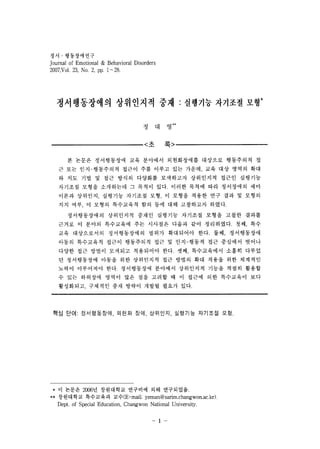
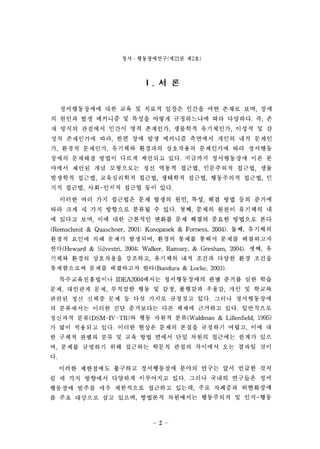
![??????? ????? ?? ???? ???? ??
??? ??? ?? ??? ??
???? ??? ????? ??? ? ??? ??? ?? ???? ??
??? ??? ? ???£¬ ?? ?? ?? ??? ???? ? ??? ????
??. ??? ??? ?? ??? ?? ??? ??? ??? ??? ? ??
?? ? ????? ?????? ??? ?? ????? ??? (We]]s£¬ 2000).
??? ??? ???? ?? ?? ??? ?? ??? ???? ? ???
? ??? ?? ??? ? ?????? ??? ?? ??? ????? ??
?. ?£¬ ??? ??? ????? ???? ???? ????? ??? ???
???? ??£¬ ???????? ??? ????? ??? ?????? ??
? ??? ??. ??? ??? ??? ????? ???? ?????? ??
???? ??? ??? ?? ??? ???? ????? ?? ?? ????
??? ??? ??? ???? ??? ??. ??? ? ??? ???? ??
? ????? ?? ??? ????? ???? ?? ??? ???? ??
(Wells, 2000).
? ??? ?????? ?? ???? ?????? ???? ?????
?? ?? ??-????? ??? ?? ??? ?? ???£¬ ?? ?? ???
??£¬ ?? ?? ? ?? ??? ???? ????? ???? ????? ?
?? ???? ???? (self-regulatory excutive function: S-REF) ??? ??
??? ? ??? ??. ??? ??? ?? ????? ????? ????£¬
???? ???? ??£¬ ? ??? ??? ?? ?? ? ??? ?? ??£¬ ?
??? ????? ?? ?? ?? ????? ??.
11. ????? ????? ????
1. ????? ????
1) ????
??? ??? ??? ??? 2???? ??? ??? ??? ??? ??
? ?? ??? ?? ????? ??£¬ ??? ??? ?? ??? ?? ??
??? ?? ??? ??? ??(??? ?£¬ 2004).
?????? ???? ??? ??? ?? ?? ??? ??? ??? ??
? ¡¢)](https://image.slidesharecdn.com/2007-140915101459-phpapp01/85/2007-3-320.jpg)
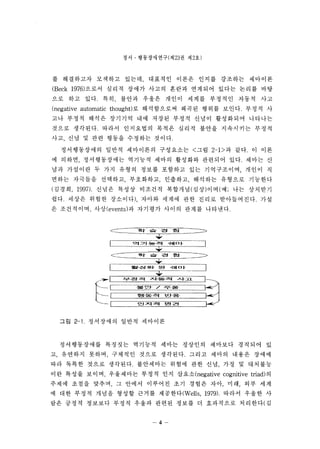

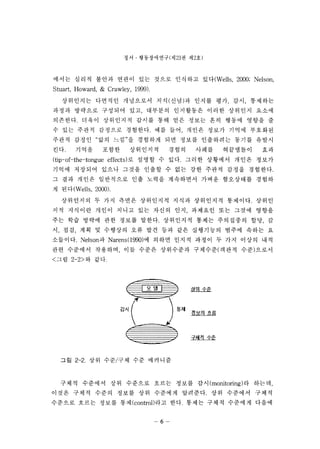
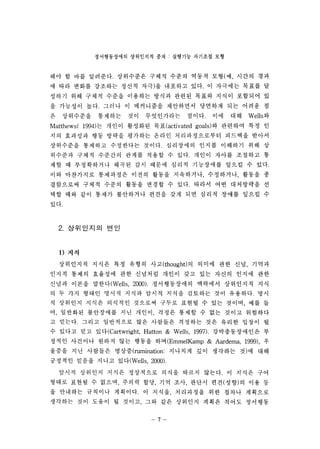
![?? ¡¤ ??????(?1123 ? ? 2?)
???? ??? ???? ????(???£¬ 1997; Wells, 2000),
2) ??
????? ??? ?? ??? ??? ?? ??£¬ ????? ??? ??
??? ??? ???? ??. ????? ??? ???? ??? ??? ??
??? ???? ??? ??? ???£¬ ??? ??? ???.
????? ??? ? ?? ???? ??????? ??? ? ??. ??
??£¬ ???????? ??? ?? ??? ???? ???? ????. ??
????? ??? ?? ??(???? ??£¬ ??????? ??£¬ ???£¬ ??
??£¬ ????)? ??? ? ??£¬ Nelson, Kruglanski ? ]ost(998) ? ?? ??
? ??? ??? ???? ? ?? ??? ??? ??? ???? ?? ? ?
? ???? ??? ???? ????£¬ Schwarz? Clore(988) ? ???? ?
?? ??? ??? ??? ????? ?????£¬ Wells ? Matthews(994) ?
???? ???? ??? ????? ??? ??? ??? ??. ??£¬ ???
???? ???????? ??? ???? ????? ??? ???? ??
???? ?? ??? ???? ??? ??. ?? ?? ???????? ??
? ?? ????? ??? ?? ???? ??? ????. ??? ??? ?
? ??? ??? ? ??£¬ ??? ??? ????? ??? ??? ??? ?
???? ?? ??? ? ??£¬ Clore? Pa¦Ðott(994) ? ???? ????? ?
? ??? ????? ?????? ??? ??? ??? ??? ???? ?
?? ???.
3) ????? ?? ??
????? ?? ??? ??? ??? ??? ??? ??? ???? ??
??. ? ???? ????? ?????? ???? ? ??£¬ ????? ??
? ???? ??? ? ?? ?? ???. ?????? ???? ??? ??
?? ?? ????? ???? ???? ?? ????? ?? ?? ???
???? ? ?? ?? ?? ???? ????. ????? ??? ??? ?
? ??(????£¬ ???? ????)? ?????£¬ ? ?? ??(???)? ?
???? ??? ???? ????? ? ?? q(Wells £¬ 2000),
????? ???? ??? ???? ?? ??? ??? ????? ??
??? ??? ? ?? ??? ??? ?????? ????? ???? ??
-8-](https://image.slidesharecdn.com/2007-140915101459-phpapp01/85/2007-8-320.jpg)
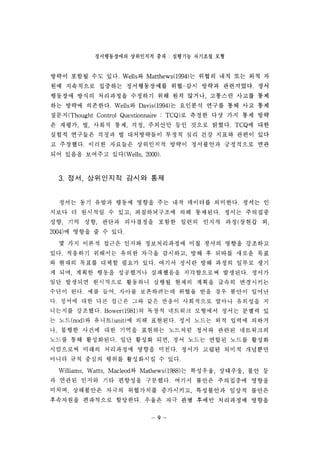
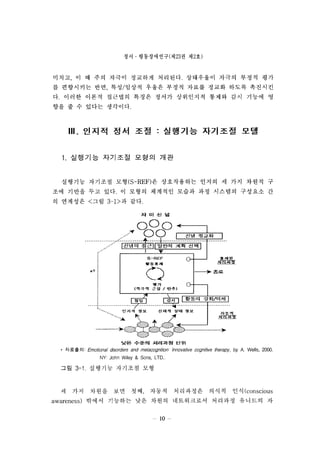

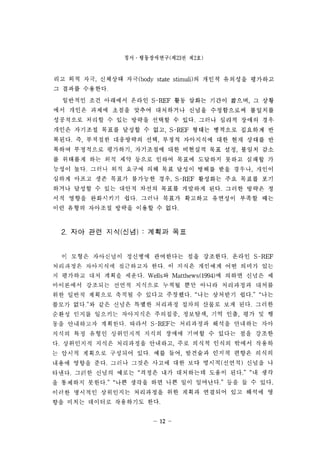


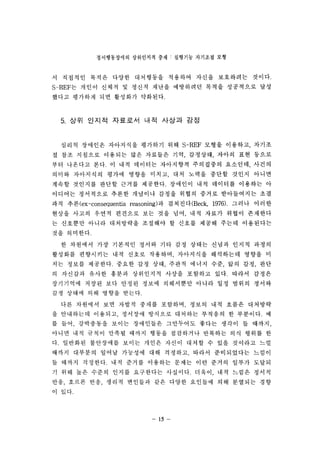
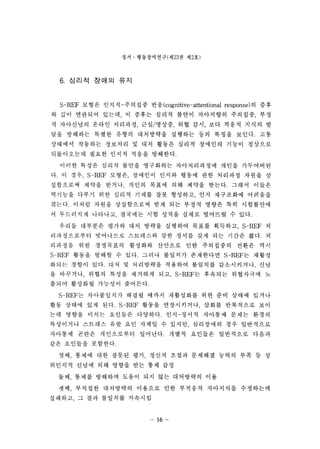
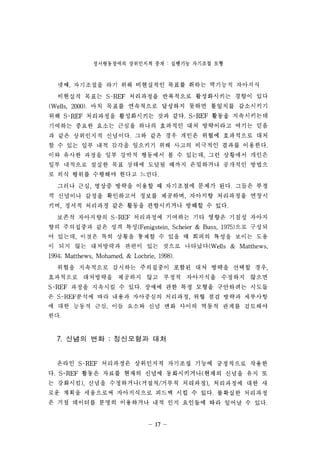
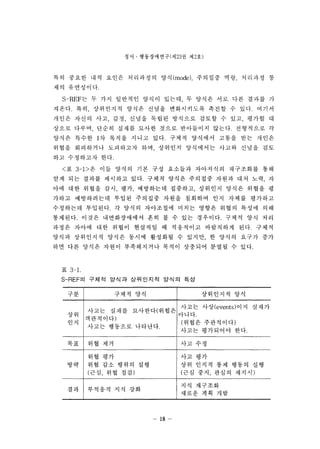



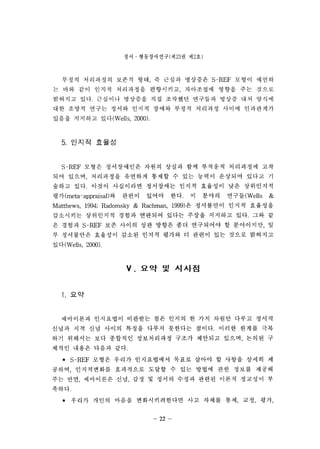

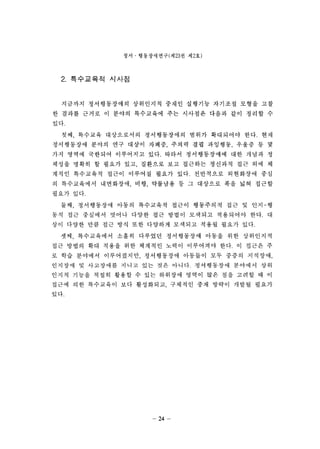
![??????? ????? ?? : ???? ???? ??
????
??? (1997). ??? ????. ??: ???.
??? ? ?? (2001). ???? ????. ??: ???.
???£¬ ???£¬ ???£¬ ???£¬ ???£¬ ??? ?? (2004). ???? ????
? ??? ?? ??: ???.
Bandura, A., & Locke, E. A. (2003). Negative self-efficacy and goal effects
revisited. Journ.al of Applied Psychology, 88, 87-99.
Beck, A. T. (976). Cognitiue Therapy and the Emotional Disorders. New
Y ork: Intemational Universities Press.
Bower, G. H. (981). Mood and Memory. American Psychologist, 36, 129-148.
Cartwright-Hatton, S., & Wells, A. (997). Beliefs about worry and
intrusions: the Metacognitions Questionnaire. Journ.al of Anxiety
Disorders, 11, 279-315.
Davies, M. I., & Clark, D. M. (998). Thought suppression produces a
rebound effect with analogue post-traumatic intrusions. Behauiour
Research and Therapy, 36, 571-582.
EmmelKamp, P. M. G., & Aardema, A. (999). Metacognitive, specific
obsessive compulsive beliefs and obsessive compulsive behavior. Clinical
Psychology and Psychotherapy, 6, 139-146 (Special Issue, Metacognition
and Cognitive Behaviour Therapy).
Fenigstein, A., Scheier, M. F., & Buss, A. H. (975). Public and private
self-consciousness: Assessment and theory. Journ.al of Consulting and
Clinica! Psycho!ogy, 43, 522-527.
Heward, W. L., & Silvestri, S. M. (2004). The neutralization of special
education. In ]. W. Jacobson, J. A. Mulick, & R. M. Foxx (Eds.) , Fads:
Dubious and improbable treatments for deuelopmental disabilities.
Mahwah, NJ Erlbaum.
Higgins, E. T. (991). Personality, social psychology, and person-situation
relations: standards and knowledge activation as a common language.
In: L.A. Pervin (EdJ , Handbook of Personality Theory and Research
(pp. 301-338). New York: Guilford.
Konopasek, D., & Fomess, S. R. (2004). Research regarding the use of
- 25-](https://image.slidesharecdn.com/2007-140915101459-phpapp01/85/2007-25-320.jpg)
![?? ¡¤ ??????(? 23 ? ? 2?)
psychopharmacology in the treatment of emotional and behavioral
disorders. In R. B. Rutherford, M. M. Quinn, & S. R. Mathur (EdsJ ,
Handbook 01 research in emotional and behavioral disorders. New
Y ork: Guilford.
Matthews, G., Hillyard, E. ]. & Campbell, S. E. (999). Metacognition and
maladaptive coping as components of test anxiety. Clinical Psychology
and Psychotherapy, 6, 111-126 (Special Issue, Metacognition and
Cognitive Behaviour Therapy).
Mattews, G., Mohamed, A., & Lochrie, B. (1998). Dispositional self-focus of
attention and individual differences in appraisal and coping. In: ].
Bermadez, A.M. Perez, A. Sanchez-Elvira G.K. van Heck (Eds),
Personality Psychology in Europe, Vol. 6, (pp. 278-285). Tilburg:
Tilburg University Press.
McNally, R. ]., & Ricciardi, ]. N. (996). Suppression of negative and neutral
thoughts. Behavioural and Cognitive Psychotherapy, 24, 17-25.
Nelson, T. 0., Kruglanski, A. W., & Jost, T. ]. (998). Knowing thyself and
others: progress in metacognitive social psychology. In: V.Y. Yzerbyt, G.
Lories & B. Dardenne (Eds), Metacognition: Cognitive and Social
Dimensions (pp. 69-89). London: Sage.
Nelson, O. T., Stuart, R. B., Howard, G., & Crawley, M. (999).
Metacognition and clinical psychology: a preliminary framework for
research and practice. Clinical Psychology and Psychotherapy, 6, 73-80
(Special Issue, Metacognition and Cognitive Behaviour Therapy).
Nelson, T. 0., & Narens, L. (1990). Metamemory: a theoretical framework
and some new findings. In: G.H. Bower (EdJ. The Psychology 01
Learning and M otivation (pp. 125-173). New York: Academic Press.
Purdon, C., & Clark, D. A. (200¨¹a). Suppression of obsession-like thoughts in
non-clinical individuals. Part 1. Impact on thought frequency, appraisal
and mood state (submitted for publication).
Remschmidt, H., & Quaschmer, K. (2001). Psychodynamic therapy. In H.
Remschmidt (EdJ, Psychotherapy with children and adolescents (pp.
81-97). New York: Cambridge University Press.
Salkovski, P. M., & Campbell, P. (994). Thought suppression induces
intrusions in naturally occurring negative intrusive thoughts. Behaviour
%
¦Ø](https://image.slidesharecdn.com/2007-140915101459-phpapp01/85/2007-26-320.jpg)
![??????? ????? ?? : ???? ???? ??
Research and Therapy, 32, 1-8.
Schwarz, N., & Clore. G. L. (988). How do 1 feel about it? Infonnational
function of affective states. In K. Fiedler & ].P. Forgas (Eds), Affect,
Cognition and Social Behaviour (pp. 44-62). Toronto: Hogrefe
International.
Teasdale, ]. D., & Barnard, P. ]. (993). ??ct£¬ Cognition and Change:
Remodelling Depressive Thought. Hove: Erlbaum.
Waldman, 1. D., & Lillenfield, S. O. (995). Diagnosis and classification. In M.
Hersen., & R. T. Ammennan (Eds.) , Advanced abnormal child
psychology (pp. 21-36) Hillsdale, NJ: Erlbaum.
Walker, H. M., R?nsey £¬ E., & Gresham, F. M. (2004). Antisocial behavior in
school: Strategies and best practices (2nd ed.J. Pacific Grove, CA:
Brooks/Cole.
Wells, A., & Mattews, G. (994). Attention and Emotion. A Clinical
Perspective. Hove: Erlbaum.
Wells, A. (2000). Emotional disorders and Me?cognition: Innovative
cognitive therapy. NY John Wiley & Sons, LTD.
Wells, A., & Matthews, G. (996). Mode1ling cognition in emotional disorder:
The S-REF model. Behaviour Research and Therapy, 32, 867-870
Williams, ]. M. G., Watts, F. N., MacLeod, C., & Mathews, A. (988).
Cognitive P?cholo? and Emotional Disorders. Chichester: Wiley.
York, D., Borkovec, T. D., Vasey, M., & Stern, R. (987). Effects of worry
and somatic anxiety induction on thoughts, emotion and physiological
activity. Behaviour Research and Therapy, 25, 523-526.
I?? ??: 2007. 04. 30. / ??? ??: 2007. 06. 11. / ?? ??: 2007. 06. 18.>
?](https://image.slidesharecdn.com/2007-140915101459-phpapp01/85/2007-27-320.jpg)
